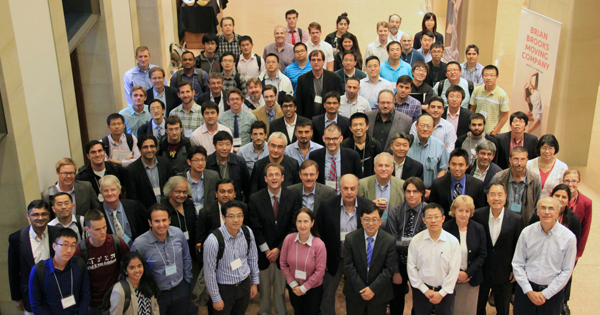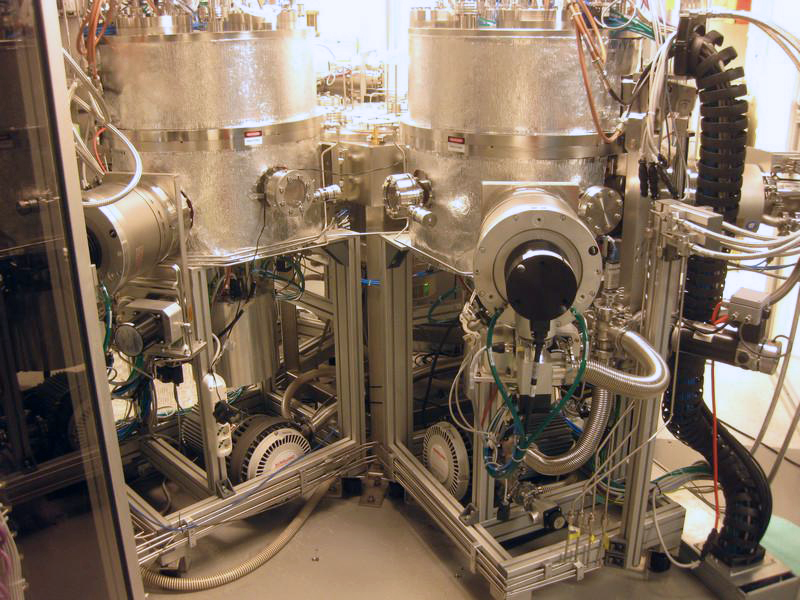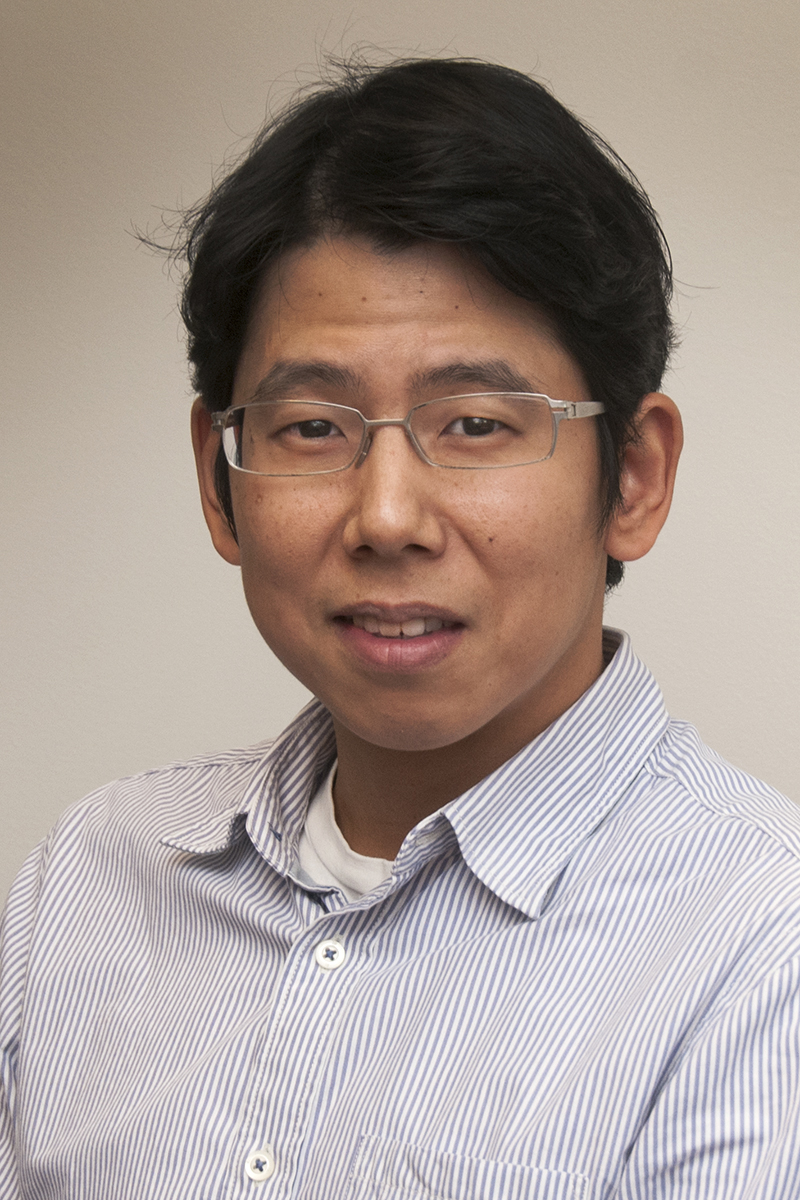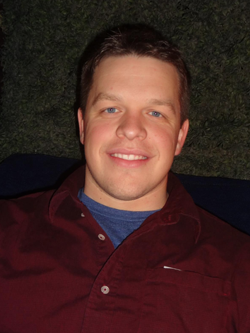November 2016 Newsletter: Volume 3, Issue 4
A Message From the Director, Jian-Ping Wang
When the STARnet program began, we realized that, compared to Japanese Universities, U.S. higher education had a poor spintronics infrastructure and a not-so-great track record of working synergistically with industry. One specific example: no university had an industry-compatible sputtering system. I am very pleased to announce that C-SPIN, with amazing cooperation from the University of Minnesota, has addressed this concern after a few years of stubborn effort (see the article in this Newsletter). I sincerely appreciate the great support from the University of Minnesota’s Office of Vice President for Research, the College of Science and Engineering Dean’s office, and some of our fellow science and engineering departments and schools.
Now, many thanks are in order. First, I would like to thank all C-SPIN PIs, students and postdocs for presenting their work to our sponsors during our successful annual review. It is exciting that CSPIN has delivered several key materials and device feasibility demonstrations while continuing to lead the spintronic field in neuromporphic computing, logic in memory, and non-volatile processing. C-SPIN PIs have produced a good number of patents to protect sponsors’ best interests while championing new physics, novel materials, and novel devices. The review included two successful, forward-looking focus sessions on “beyond STT memory” and “beyond von Newman spin-based computing architectures,” with speakers from academia, DARPA and industry like IBM and Micron. As always, many thanks to Marie and Sylvia for their perfect arrangement of the annual review.
Second, I would like to congratulate C-SPIN faculty members and students who presented their exciting work at a variety of conferences including DRC, DAC, TECHCON, and MMM (and, in anticipation, the coming IEDM). C-SPIN research groups have been leading the field and showing the research community their significant progress and their collaboration with STARnet industry sponsors. For example, C-SPIN students had 11 posters at Techcon 2016 (the 2nd most), and C-SPIN PIs had five (!) invited talks at MMM.
Third, I would like to congratulate Prof. Chris Kim for his recent recognition by SRC.
Last but not least, I appreciate the invitations to participate in Intel STARnet/NRI annual review, a meeting with DARPA MTO STARnet program managers together with other center directors, and the 4th US Government MTJ workshop. At all three, I was able to present C-SPIN’s key progress on spintronic materials, devices, architectures and their potential applications. Given our faithfulness to the vertically integrated model of C-SPIN, we should feel confident in our ability to continue to move research forward and to incorporate other advanced technologies into our research.
Great Reviews of the 2016 Annual Review
The fourth Annual Review was a great success. The raw numbers are a good place to start: 12 sponsors, 36 PIs, 67 graduate students and post-docs, and 55 posters. The formal presentations revealed just how far C-SPIN has pushed the frontiers of spintronics science in the past four years – and all of the promising technology that can be developed in Year 5. Perhaps best of all were the poster and deep-dive sessions: students and PIs sharing research and ideas for moving forward, industry representatives discussing the “industry research option” with graduate students and post-docs, and a dinner accompanied by Minnesota’s finest lighting storm of the season.
The pre-Review “focus session” workshop deserves a special mention. The workshop was initiated by C-SPIN leadership as a way to do a deeper look into two important spintronics fields: non-STT spintronic approaches to memory and non-Boolean/non-Von Neumann computing. According to participants, these workshops generated important discussions about current and future spintronics research.

New Deposition Tool Arrives at UMN

It’s not huge: about 4.5 meters x 5.3 meters, or the size of a decent living room. But it will have a big impact on C-SPIN and non-C-SPIN research.
An Oerlikon Leybold Vacuum Deposition Tool has arrived at the University of Minnesota and be ready for use by March 2017. With four chambers – including separate metal and oxide chambers – it greatly reduces cross pollution when making materials for research, and it can sputter insulator materials. Moreover, it’s automated, which means that it won’t use tremendous amounts of operator time.

C-SPIN researchers are already planning on using the Oerlikon tool to make several thin film materials – like novel magnetoelectric materials, FePd, Heusler alloys, perpendicular oxides, and others – for spintronic devices that will be tested before the end of the Center’s fifth year. The Oerlikon tool also has 8-inch wafer sample holders, so it can be used to fabricate wafer-level products for C-SPIN’s industrial partners.
Many other researchers from the University of Minnesota, other universities, and industry will also have access to the tool. According to C-SPIN Director Jian-Ping Wang, “We expect it to be a vital tool for spintronics research for years to come – for computing, memory, and many other fields.”
 Prof. Chris Kim
Prof. Chris KimUniversity of Minnesota Professor, Chris Kim Honored by SRC
Just before the Annual Review, C-SPIN PI Chris Kim from the University of Minnesota received SRC’s Technical Excellence Award at the 2016 TECHCON Conference in Austin, Texas.
The Technical Excellence Award recognizes a researcher who has contributed work that is of exceptional value to SRC members. Candidates are nominated by industry associates and selected by a special SRC Panel. Kim was nominated by Vijay Reddy from Texas Instruments, and the nomination was supported by IMB, Intel, and Qualcomm.
Chris Kim received the award for developing silicon odometer technology that helps system designers understand and provide compensation for system aging. The technology allows for efficient characterization of circuit aging during process development, in-field monitoring of aging effects, and real-time adjustments to compensate for aging effects.
Chris Kim is the second C-SPIN PI to receive a major award from SRC. In 2015, Kaushik Roy of Purdue received SRC’s Aristotle Award for outstanding teaching and a deep commitment to the educational experience of his students.
Student and Post-Doc Profiles
 Jessica Jones
Jessica JonesJessica Jones
Ph.D. candidate at the University of North Texas
I am growing boron nitride on transition metal and metal oxide substrates, then depositing graphene by MBE on top of the BN for device applications. This is for Theme 2. The use for the films vary with the thickness of the BN layer: they are spin filters (or non-local spin valves) when BN is thin and an insulator when sufficiently thick.
I have also worked on research projects in bomb detection and environmental chemistry at Western Kentucky University. I was co-author of four publications during that time. My first “first author” publication – on BN grown on ruthenium oxide – is submitted and pending publication in JVST B.
My first research experience as an undergraduate helped get me into this field. I did bomb detection with functionalized nanosprings, and the most common question I got asked was “how springy are the springs?” This question didn’t make any sense because the springs are on the nanometer scale, but that did cause me to look further into how they were grown and functionalized. This desire to understand how cutting-edge materials were made eventually led me to a double major in physics and chemistry. With my passion for understanding how materials were made and how that determined their performance, I found the research I’m doing now.
Research has been the cornerstone of my education. I began doing research less than a month into my undergrad degree, and I definitely want to continue that throughout my career, especially in the field of graphene-based electronics. I also hope to inspire students. I worked as a TA from my sophomore year in college until I got a research assistantship. Nothing is more rewarding than seeing a student finally understand what you’ve been saying for 15 minutes – except maybe the time when everything works correctly in the lab and you get decent results.
 Nicholas Harmon
Nicholas HarmonNicholas Harmon
Post-doctoral Researcher at the University of Iowa
I mostly work with semiconductor spin channels (for Theme 2) and phenomena that might affect their role in spin-based computing. In many semiconductors that show promising spin lifetimes, such as GaAs, there exist nuclei with magnetic moments that can play a role in relaxing carrier spin. To the best of my knowledge, I am the first to tackle the challenge of devising a theoretical explanation to the inhomogeneity of this nuclear field. These hyperfine fields could be relevant in other ways too; we are finding out that they can contribute to the spin Hall angle, so they are another consideration when looking at large spin-orbit materials. I have also studied the role of defects at the interface between ferromagnets and non-magnetic materials. As it turns out, the transport though the defect can mimic signatures that have been interpreted as spin accumulation.
I have also been looking into organic semiconductors. There are very large magnetic field effects in some organic systems that are due to two-spin correlations. C-SPIN and STARnet have been a great avenue for collaborating with experimentalists: I have two theory-experimental papers published now (one with C-SPIN and one with C-SPIN and FAME) as well as one pure theory paper.
I knew I wanted to go into physics since middle school. I really enjoy the field of spintronics because of its breadth and diversity of topics. It lies at the interface between pure physics and applied, something I have grown to appreciate as a member of C-SPIN.
I really enjoy research. The aspects of learning and problem-solving are so appealing to me. I hope to continue spintronics research as part of a career in academia.


